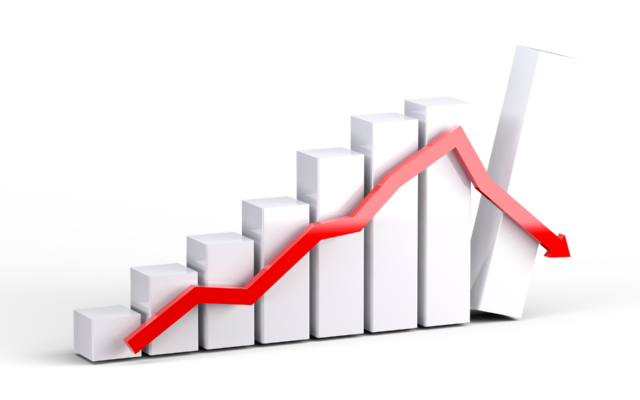Thanks to the digital transformation, Marketing’s bubble is about to pop and, just like the housing and financial crash of 2008, nobody’s paying attention.
In 2008, the U.S. financial and housing markets experienced unprecedented crises fueled by an asset bubble of sub-prime mortgages, collateralized debt obligations, credit-default swaps and mortgage-backed securities.
When it was all over, $5 trillion in pension money, real estate value, ‘401k’, savings and bonds had disappeared, 8 million people lost their jobs and 6 million people lost their homes.
The crisis was enabled by greed, negligence and a profound lack of professional integrity. Alarmingly, today’s approach to digital marketing bears many of these same warning signs and, if left unchecked, is just as surely headed for epic disaster.
In fact, with soaring digital marketing budgets set to crest $85 billion in 2017 and climb to over $103 billion by 2019 and, with endless mainstream messaging around act-now-or-lose-out digital transformation, businesses are caught in a digital market frenzy, blindly hurdling themselves towards catastrophe.
In a stark and sobering parallel to the 2008 market crash, millions of dollars and jobs are sitting on the bubble and its wall is getting dangerously thin.
The trajectory is familiar: Consumers have become increasingly comfortable with digital and web technology (90%+ of US homes have Internet) and their usage of digital tools has risen exponentially. Eager to take full advantage of these trends, marketers have rushed to fill the growing business opportunity and need.
So far, so good. But not so fast.
Already back in 2015, Forrester’s Vice President and Principal Analyst, Nate Elliott, conducted a social media benchmark study evaluating 11.8 million consumer-brand interactions of the top 50 global brands (including the likes of Nike, Apple, IBM, Toyota, etc.) . Elliott’s study presented data showing:
- Investment in digital
- Consumer followers
- Engagement rates
As anticipated, the study showed the top brands are investing heavily in digital marketing. On average, the top 50 brands were posting 18.3 times per week on Twitter, 6.5 times per week on Facebook and 4.9 times per week on Instagram. Likewise, consumers are clearly looking to engage with brands via digital. Follower counts, according to Forrester, have skyrocketed with top brands now averaging 18.1 million Facebook fans, over 1 million on Instagram and followers have nearly doubled on Twitter and Google+.
But, looking at the data in a manner akin to Wall Street’s Michael Burry (the one who accurately predicted the 2008 market crash and who subsequently successfully shorted the market), Forrester’s study should make all CEOs short their marketing bets.
Although brands are increasingly digitally-focused and subsequently escalating their digital spend rates and, although consumers definitely to want to engage with those brands online, actual brand-consumer engagement rates are plummeting. The study showed that:
- Instagram’s interaction rate fell by 50%
- Per-follower interaction rates on Twitter were down 10%
- Per-follower interaction rates on Google+ fell by 35%
- Facebook’s interaction rates fell by 20% (updated statistic via Buzzsumo 2017)
It is the discrepancy between the escalating digital marketing spend (and related promises of brand performance/benefit) and the declining consumer engagement rates that we should pay particular attention to and be measuring our marketing efforts against.
And these numbers are not anomalies. They echo evidence found elsewhere:
- Forbes found “only 32 per cent of brand marketers believe they’re executing an effective digital strategy.”
- Accenture Digital discovered only 45 per cent of business executives interviewed believe their digital programs will achieve business objectives.
- Sapient uncovered that nearly 50 per cent of brands have switched marketing agencies (or plan to in the next 12 months) for one with greater digital knowledge or have hired additional digital specialists to handle digital work.
And of course, there’s the industry giant, P&G, who has significantly cut back on digital citing it as ‘ineffective’ while simultaneously claiming no negative impact to brand performance.
So what’s going wrong?
Marketing’s goal is to build trust relationships between brands and consumers to encourage a positive change in behavior (buy something, endorse something, do something different). At the same time, brands trust their digital partners to deliver against their best interests and meet the real and powerful market needs of consumers wanting to connect.
Technology itself isn’t the problem. It’s how we use these tools to connect and help grow our respective markets that needs further analysis. The marketer-generated push for more digital, despite evidence that these strategies and tactics are falling well short of anticipated benefit, begs a number of troubling, 2008-esque questions: Are marketers focused on the best interests of both the brand and the consumer or are they looking out for their own?
Consider: If marketers were looking out for the brand and consumers’ best interest would we have:
- Global CMOs reporting that marketing’s efforts aren’t meeting business goals? (Forbes)
- Falling engagements scores in Twitter, YouTube, Instagram? (Forrester)
- Fifty per cent of brands reporting agency turnover and scrambling to find someone to actually deliver customer engagement? (Sapient)
See the bubble now?
We are brewing the perfect storm of massive confidence, massive revenue opportunities and failing results. The enthusiasm in the market around digital and digital transformation is keeping marketers focused on revenue potential and marketing operations and not on their primary responsibility of knowing consumer behaviors and forming brand-consumer relationships. This second-tier consumer treatment will result in marginal marketing and ultimately, in consumer disloyalty and distrust.
Likewise, digital’s financial promise encourages the development of an ever-steady stream of available technology options for brands to choose from. However, just like with the housing crash, the diminishing ROI will inevitably cause a tipping-point where brands will walk away from digital citing it as ineffective.
In summary, if marketers fail to strategically address the issues of effectiveness, engagement and ROI, a host of significant consequences will follow including the disappearance of hundreds (if not thousands) of digital marketing solution providers and the extinction of countless marketing agencies and departments.
And let’s not forget, businesses will lose millions in revenue potential as a direct result of marginal and misaligned digital engagement marketing efforts.
Unless brands overhaul established marketing practices and embrace the real needs and digitally-driven motives of consumers – placing consumers and not the revenue-generating needs of their own brands at the center of their activity – they cannot and will not deliver real consumer engagement (ROI) in a digital world.
One thing remains: Will businesses figure it out in time or will we all experience the digital crash and the end of marketing as we know it?
To get a full copy of Digital’s BIG short visit www.digitalbigshort.com
REFERENCES
http://www.ironpaper.com/webintel/articles/digital-marketing-spending-trends-us-globally/
http://www.pewresearch.org/fact-tank/2017/01/12/evolution-of-technology/
http://blogs.forrester.com/nate_elliott/15-09-15-how_does_your_brand_stack_up_on_facebook_twitter_and_instagram
http://images.forbes.com/forbesinsights/StudyPDFs/Axiom-SpeedToInsight-Report.pdf
https://www.accenture.com/us-en/insight-digital-content-survey-2015
http://www.convinceandconvert.com/digital-marketing/the-10-strengths-of-the-agency-of-the-future/
http://www.thedrum.com/news/2017/07/28/pg-s-multimillion-dollar-cutback-ineffective-digital-ads-hasn-t-hampered-its-growth
Article by channel:
Everything you need to know about Digital Transformation
The best articles, news and events direct to your inbox
Read more articles tagged: Digital Marketing, Featured







